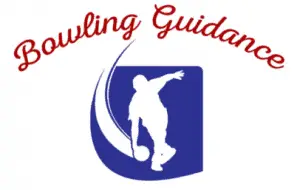
Adaptive bowling is a great option for able-bodied and disabled to enjoy bowling together. But can disabled bowlers score as same as able-bodied bowlers? The answer is, no. Due to disability, handicapped bowlers usually cannot score as high as others. Therefore, an adjustment or a scratch score is added to their scores. So, do they just add the additional score randomly? Of course, not. That’s why there is a universal bowling handicap calculator that lets you measure a bowling handicap. This equalizes competitions, makes games fair for everyone, and even more competitive.
How do you calculate bowling handicap?
The bowling handicap is the percentage of the difference between the basis average and your bowling average. To calculate the bowling handicap, you must know the used percentage factor and the used basis average from your tournament and league officials. All you have to do is ask your tournament or league officials what percentage factor and basis score they use. Generally, the basis scores vary from about 200, 210, or 220, which means it is the high score that is intended to be higher than any individual’s bowling score average. The percentage factors are typically 80%, 90%, or 100%, but it varies in special games or competitions, and 90% is used in most cases.
To know your average score, first, add all of the scores from your previous official league games. After that divide the added score by the number of games you have bowled. Now that you have your average score, subtract it from the basis score and then multiply the result by the percentage factor. Voila! Now you know your bowling handicap. Just add this bowling handicap to your actual bowling score for each game.
Real Example of Bowling Handicap
The formula for bowling handicap is, Handicap = (basis value – average) x percentage factor
Here a real example to clarify that:
Let’s assume your bowling average is 150. Now, you ‘re bowling in a tournament where the base value is 210 and the percentage factor is 90%. Now if you put the numbers as per the formula, you will get,
Handicap = (210 – 150) x 0.9 = 54
Now, let’s say in the tournament, your scratch scores are 165, 170, and 175.
But now that you know your handicap is 54.
Your totals will be (165+54) = 219, (170+54) = 224, and (175+54) = 229.
219, 224, 229- these are undoubtedly some really good score. Therefore, your disability won’t stop you from getting a nice score!
What is a good handicap in bowling?
Bowlers often prefer having handicapped bowlers in their leagues. This is because the bowling handicap allows them to have a better score than an able-bodied bowler may not score. Whatever the handicapped bowler’s score is, he/she will get at least 50 added to their original score. Hence, it acts as a major advantage and often makes teams win. So, when the handicap is added to increase the total score of the disabled bowler, it is considered a good handicap.
Can you have a negative handicap in bowling?
According to USBC, the negative handicap is applied if a disabled bowler scores 200 or more without the handicap score, which means it is done on an individual basis. For example, if a disabled bowler scores 210, then -10 is considered a handicap, which is a negative handicap because the bowler’s actual score will be 200 (assuming 100% as a percentage factor).
Conclusion
Socialization through bowling is cool for both disabled and able-bodied persons. It’s a great way to enjoy and have fun together. Handicap leagues or tournaments bring the best out of everyone and the goodwill, but most importantly, the emergence of an atmosphere of friendly competition and equality. So use this bowling handicap calculator to find know your or your friend’s handicap score and keep on bowling with full enthusiasm.

